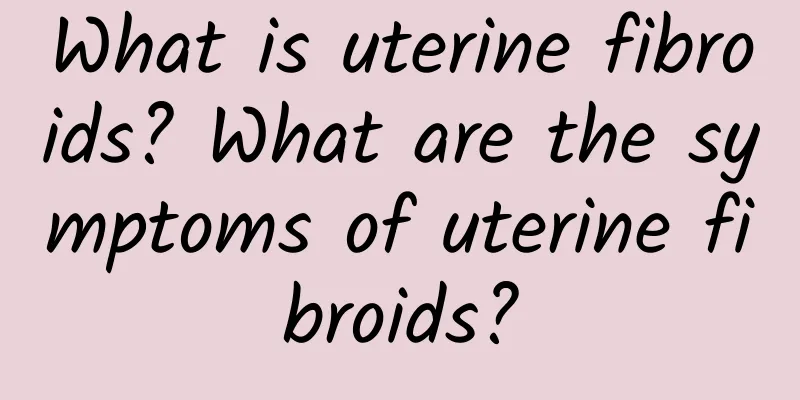What is uterine fibroids? What are the symptoms of uterine fibroids?

|
Many female friends find that they have uterine fibroids during routine physical examinations. They don’t know what uterine fibroids are, so they have a lot of fear and anxiety. Some even go to the doctor, which delays the treatment of the disease. So, what are uterine fibroids? What are the symptoms? Doctors specializing in uterine fibroids say that although uterine fibroids are a benign tumor, the specific cause is still unclear. Studies have shown that excessive hormone secretion is the most common cause of uterine fibroids. So what are uterine fibroids? According to authoritative experts, uterine fibroids, also known as uterine leiomyoma, are mostly asymptomatic, with a few showing vaginal bleeding, abdominal contact with the tumor and compression symptoms. If the pedicle is twisted or other conditions occur, it will cause pain. Multiple uterine fibroids are very common. The clinical manifestations of uterine fibroids often vary with the location, size, growth rate, whether there is secondary degeneration and complications of the fibroids. Common clinical phenomena are uterine bleeding, abdominal masses, pain, symptoms of proximity of adjacent organs, increased leucorrhea, infertility, anemia and heart dysfunction. Many patients do not have any physical abnormalities in the early stages, and some patients find that they have uterine fibroids during pelvic examinations. Of course, if there are symptoms, it is related to the location of the fibroids, fibroid degeneration and production speed. The more common symptoms of uterine fibroids are: 1. Abdominal mass: abdominal distension, lower abdominal swelling, accompanied by a feeling of falling. 2. Menstrual changes: The most common symptoms are shortened menstrual cycle, increased menstrual volume, prolonged menstruation, irregular vaginal bleeding, etc. 3. Pain: Generally, patients do not have abdominal pain, but often have lower abdominal distension, back pain, etc. 4. Increased leucorrhea: Increased leucorrhea, sometimes with a large amount of purulent and bloody discharge and necrotic tissue. |
<<: Do most uterine fibroids have no symptoms? Is vaginal bleeding a symptom of uterine fibroids?
>>: What are uterine fibroids? Can uterine fibroids cause vaginal bleeding?
Recommend
Experts explain in detail how to care for ovarian cysts
It is understood that many patients with ovarian ...
What are the main causes of dysmenorrhea?
There are many gynecological diseases, but most p...
You can lose weight by taking a bath and brushing your teeth! Seize the spare time to exercise and lose weight faster
Make good use of the short time for washing and b...
Get rid of metabolic syndrome and take action! Three must-learn exercise prescriptions to prevent three highs
If your waistline is too thick, your blood pressu...
Treatment of pelvic inflammatory disease requires the following:
Pelvic inflammatory disease can cause great harm ...
Bartholinitis physical therapy price
How much does it cost to treat Bartholinitis? Bec...
The most important hazards of abortion
Abortion is an operation that many women who have...
Can I eat barbecue if I have pelvic inflammatory disease? It's best not to eat it
Eating barbecue in summer is a favorite diet for ...
Understanding the diagnosis of vulvar leukoplakia
The early symptoms of gynecological diseases are ...
Do you know the dangers of endometrial tuberculosis?
Endometrial tuberculosis can be acute or chronic,...
What symptoms will appear after pregnancy with uterine fibroids? What are the complications of uterine fibroids?
Women with uterine fibroids are physically fragil...
Common causes of ectopic pregnancy
Ectopic pregnancy can happen to many pregnant wom...
Eating smoked sausage every day can increase your risk of pancreatic cancer
The Chinese New Year is approaching, and many sea...
What medicine should women take for irregular menstruation? Gynecologists teach you how to regulate menstruation
The occurrence of irregular menstruation makes ma...
How much does an abortion cost?
The general reference price for abortion surgery ...









